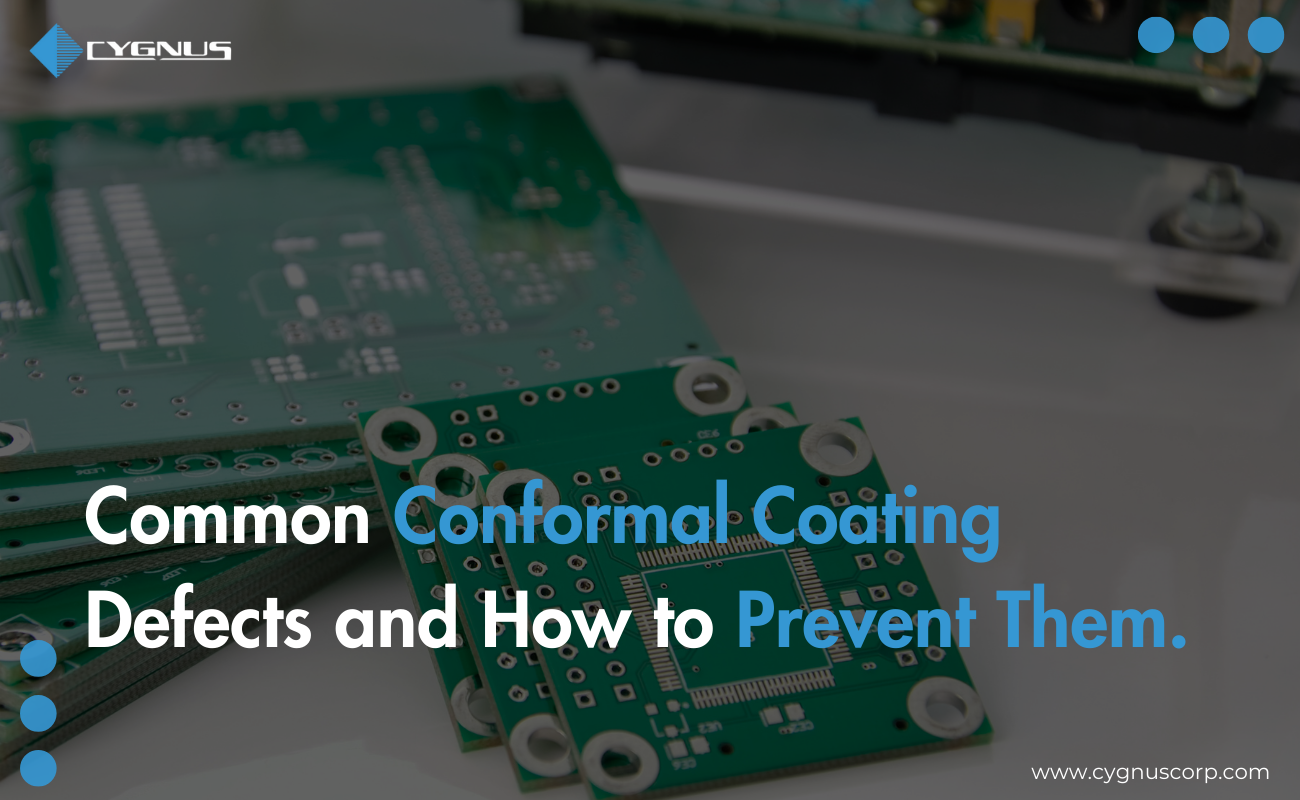Conformal coating is a vital process in electronics manufacturing that protects circuit boards from environmental damage, such as moisture, dust, and chemicals. This thin layer of protective material ensures that electronic components function reliably over time.
However, just like any other manufacturing process, conformal coating is not without its challenges. Defects in conformal coating can compromise the performance and longevity of electronic devices.
In this blog, we will explore common conformal coating defects, their causes, and effective strategies to prevent them. By understanding these issues and implementing the right measures, manufacturers can ensure that their conformal coatings perform optimally and provide the protection needed for electronic components.
1. Uneven Coating Thickness
Uneven coating thickness can lead to areas where the protection is too thin or too thick, potentially exposing parts of the circuit board to environmental damage or causing issues with the device’s functionality.
Causes:
- Inconsistent Application: Variations in the application process, such as uneven spraying or dipping, can result in inconsistent coating thickness.
- Inadequate Equipment Calibration: Coating equipment that is not properly calibrated may apply too much or too little material.
Prevention:
- Regular Equipment Maintenance: Ensure that coating equipment is regularly maintained and calibrated to apply a consistent thickness.
- Controlled Application Environment: Apply the coating in a controlled environment to minimize factors like temperature and humidity, which can affect the application process.
- Quality Control Checks: Implement rigorous quality control checks to measure coating thickness and ensure uniformity.
2. Air Bubbles and Voids
Air bubbles are pockets of air trapped between the coating and the surface of the circuit board. These bubbles can weaken the protective layer and lead to moisture infiltration.
Causes:
- Improper Mixing: Air bubbles can form if the coating material is not mixed properly before application.
- Application Technique: Incorrect application techniques, such as spraying from too far or too close, can introduce air bubbles.
Prevention:
- Thorough Mixing: Ensure that the conformal coating material is mixed thoroughly to eliminate air bubbles before application.
- Correct Application Technique: Follow recommended application techniques and distances to minimize the introduction of air bubbles.
- Use of Deaerators: In some cases, using deaerators or vacuum chambers can help remove air bubbles from the coating material.
3. Peeling or Delamination
Peeling or delamination occurs when the conformal coating starts to lift away from the surface of the circuit board, which can expose the board to environmental damage and reduce the coating’s effectiveness.
Causes:
- Poor Surface Preparation: If the circuit board is not properly cleaned and prepared before coating, the conformal coating may not adhere well.
- Incompatible Coating Materials: Using a coating material that is not compatible with the board or other components can lead to adhesion problems.
Prevention:
- Proper Surface Cleaning: Ensure that the circuit board is thoroughly cleaned and free of contaminants before applying the conformal coating.
- Choose Compatible Materials: Select conformal coating materials that are compatible with the circuit board and other components.
- Apply a Primer: In some cases, using a primer can improve adhesion between the coating and the board.
4. Cracking or Crazing
Cracking or crazing refers to the formation of cracks or a network of fine lines on the surface of the conformal coating, which can compromise its protective properties.
Causes:
- Improper Curing: If the coating is not cured properly or if it cures too quickly, it can become brittle and prone to cracking.
- Thermal Stress: Rapid temperature changes or excessive heat can cause the coating to expand or contract unevenly, leading to cracking.
Prevention:
- Follow Curing Instructions: Adhere to the manufacturer’s curing instructions to ensure proper curing of the coating material.
- Control Temperature: Maintain a stable temperature during the curing process and avoid rapid temperature changes that could stress the coating.
- Use Flexible Coatings: Consider using flexible or elastomeric coatings that can better withstand thermal stress.
5. Contamination
Contamination occurs when foreign substances, such as dust or oil, come into contact with the conformal coating, affecting its performance and appearance.
Causes:
- Unclean Work Environment: A dirty or contaminated work environment can lead to dust or other particles settling on the coating.
- Improper Handling: Handling the circuit board with dirty hands or using contaminated tools can introduce contaminants.
Prevention:
- Maintain a Clean Environment: Keep the coating area clean and free of dust and other contaminants to prevent contamination of the coating.
- Use Clean Tools and Equipment: Ensure that all tools and equipment used in the coating process are clean and free of contaminants.
- Implement Good Handling Practices: Use clean gloves and handle the circuit boards carefully to avoid introducing contaminants.
6.Pinholes
Pinholes are tiny holes or voids in the coating that expose the underlying circuit board. They can allow contaminants to reach the board, potentially causing damage.
Causes:
- Inconsistent Coating Thickness: Thin areas in the coating can lead to pinholes.
- Contaminants: Dirt or other particles on the board can create voids in the coating.
- Improper Curing: Inadequate curing can prevent the coating from fully forming a continuous layer.
How to Prevent Them:
- Uniform Application: Apply the coating evenly to avoid thin spots where pinholes might form.
- Inspection: Regularly inspect the coated boards under appropriate lighting to detect and address pinholes early.
- Proper Curing: Follow the manufacturer’s recommended curing times and temperatures to ensure the coating fully sets and cures.
Conclusion
Conformal coating is essential for protecting electronic components, but defects can undermine its effectiveness and lead to costly repairs or replacements. You can enhance the quality and reliability of their conformal coatings by understanding common defects such as uneven coating thickness, air bubbles, peeling, cracking, and contamination, and by implementing preventive measures.
Moreover, regular maintenance of equipment, adherence to proper application techniques, and maintaining a clean environment are key steps in preventing these issues.
With these practices in place, you can ensure that your conformal coating provides the reliable protection that electronic components need to function effectively and withstand environmental challenges.
For more information on how to effectively apply conformal coatings and address specific issues, you can reach out to experts at Cygnus.




